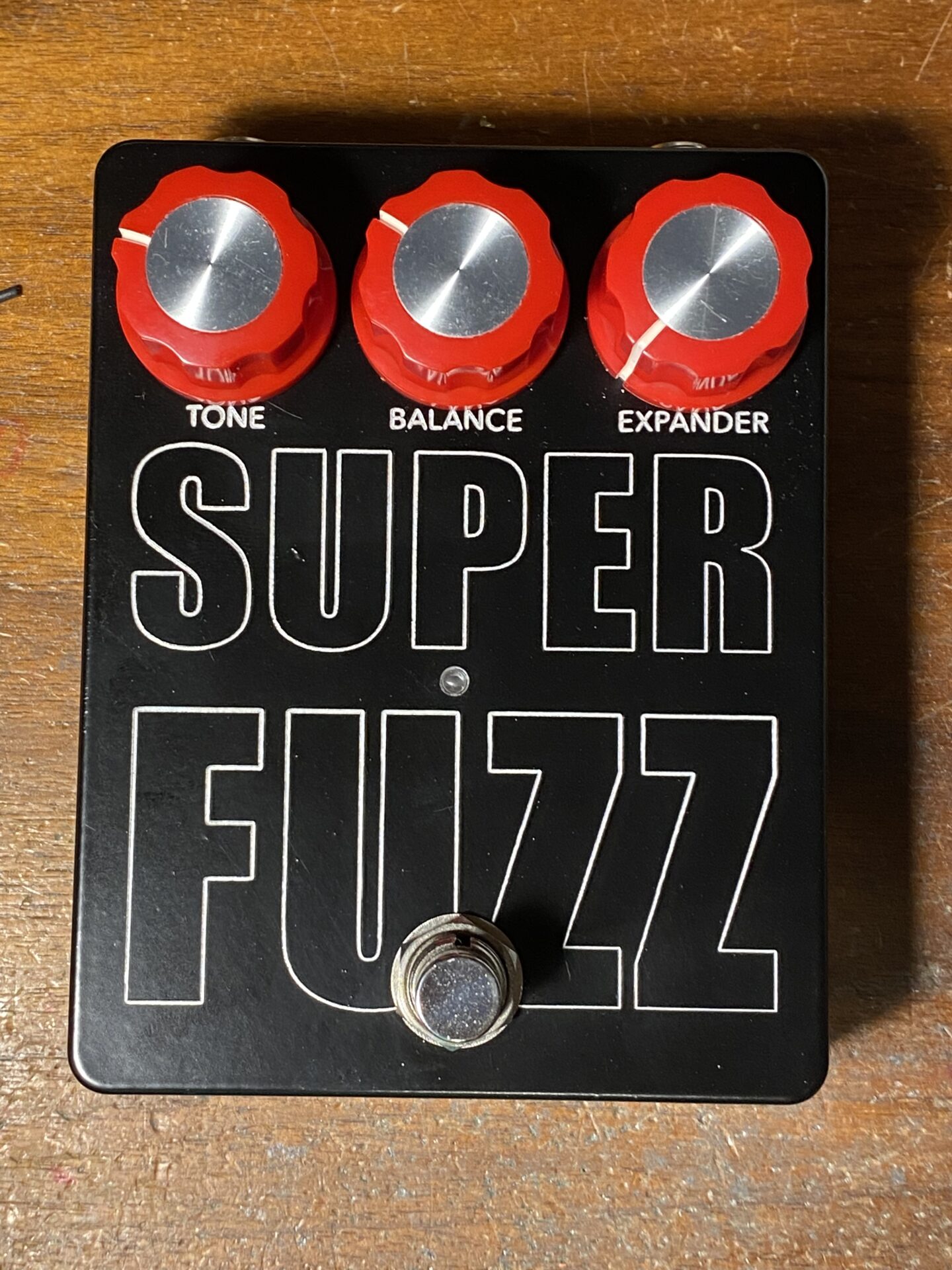Build your own Super Fuzz! The Super Fuzz is an octave fuzz used by Pete Townsend, Muddy Honey, J. Mascis and others. Read this post to learn more about the Super Fuzz.
Build Your Super Fuzz
Here is the schematic for the Super Fuzz. Note! There are several versions and schematics vary. This schematic matches the PCB that I made with some suggested over at FreeStompboxes.org.

- [1] The originals used Germanium Diodes. These are harder to get. Just about any diode will work here even LEDs. They may sound a little different but they will all work. You might even list the sound of other types of diodes better than Ge types which cost more and are harder to get!
- [2] You can use just about any NPN type transistor here. 2N3904, 2N5088 are some common part numbers. Check the pins! The BC547 will work but the pins are reversed! Check the pin arrangement if you use a different transistor.
- [3] IU designed the board to fit the 1590BB enclosure but you could get it to fit some other enclosures.
I Designed these boards in Eagle and manufactured them at PCBWay.com. They make it very easy to have your designs turned into boards at reasonable cost. The prototyping services is $5 for 10 boards. This allowed me to make share these boards with some of the builders that came to the Pedal Building Workshop at NoiseBridge.
If I gave you a red board, it has an error. You can fix it by repositioning C6. The blue board is an update that fixes this problem!

















Designed the board to fit a 1590BB in portrait. Here is a link to a drill guide pdf.
Debugging Voltages
If you are having trouble with your build use your multimeter and check the voltages at each leg of Q1-6. Below are the values I measured from my working build. If your values are way off from these check the parts in connecting to the transistor that is measuring wrong.
| Part | E | B | C |
| Q1 | 0.4v | 0.96v | 7.2v |
| Q2 | 6.6v | 7.2v | 9.2v |
| Q3 | 3.0v | 3.6v | 6.2v |
| Q4 | 1.4v | 1.6v | 1.5v |
| Q5 | 1.4v | 1.9v | 1.5v |
| Q6 | 0.5v | 1.1v | 3.7v |


Leave a Reply